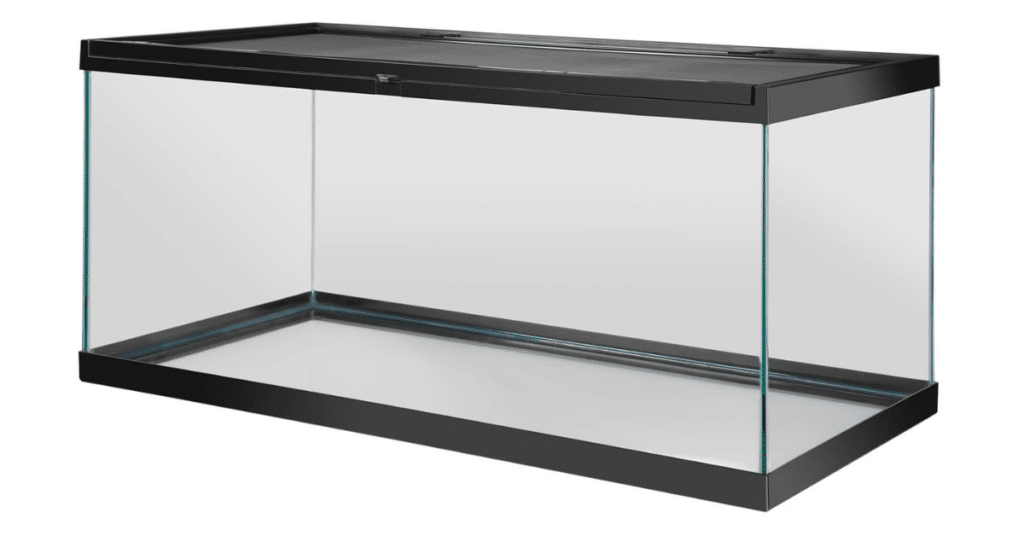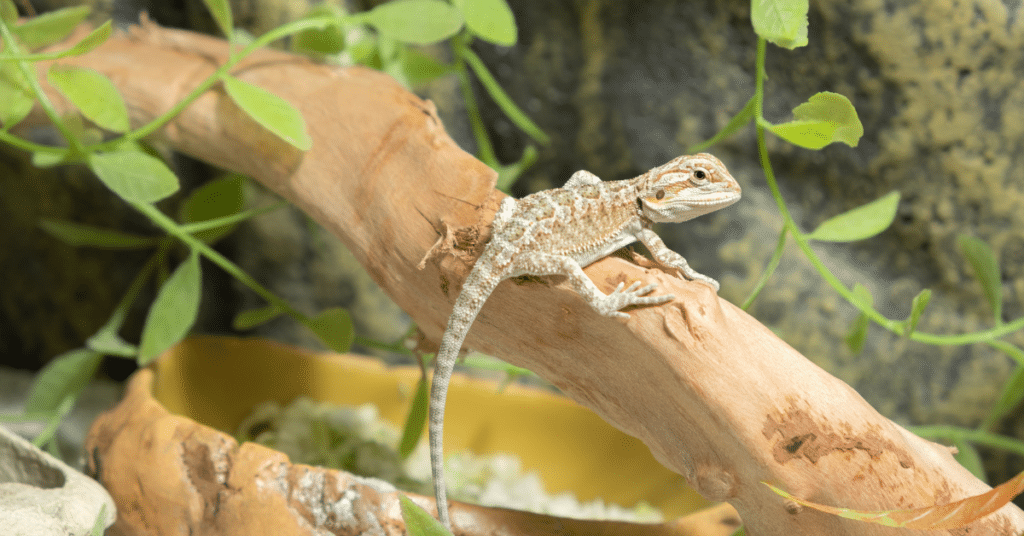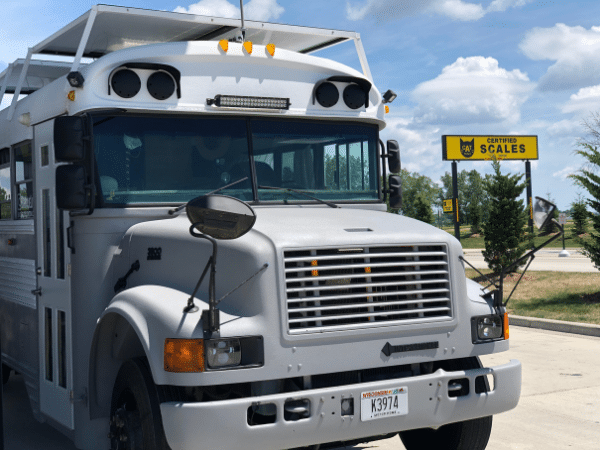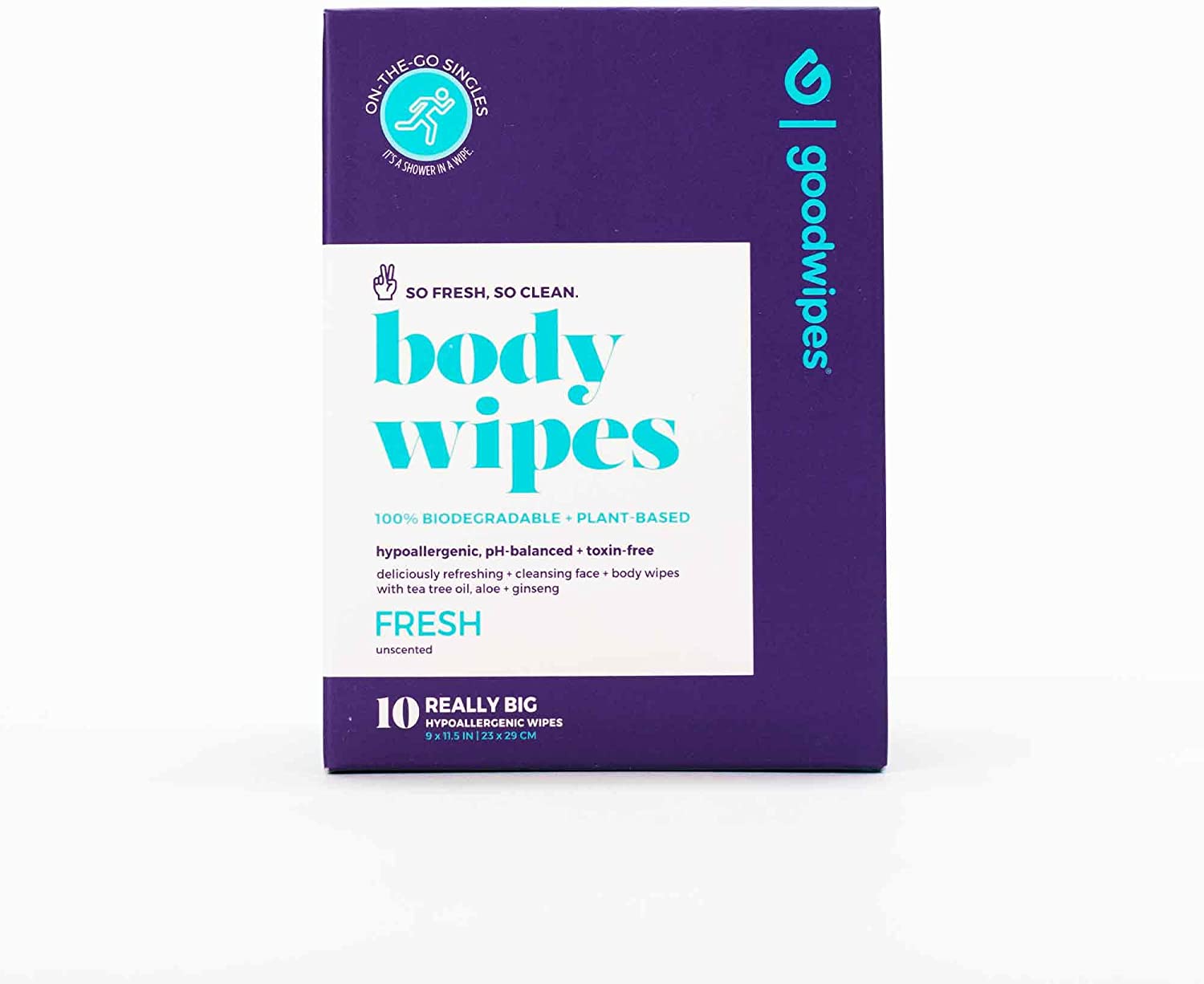
Bearded dragons can be one of the best pets for living full-time in a skoolie due to their small size and low maintenance care requirements, with only a few potential downsides when it comes to electric requirements, tank space requirements in your floor plan, and potential smells if not maintained.
In this article, we will go through why a bearded dragon may or may not be a good pet for you if you plan on living in a skoolie.
Summer Sun
One of the general downsides of living in a skoolie can be how hot they get is during the summer months when parked in the sun. Many skoolie owners install RV vent fans and home air conditioners to break the heat. However, this heat can be perfect for bearded dragons.
Creating a space for a bearded dragon tank in a window spot where natural light can shine directly into the tank can provide a bearded dragon with both the UVB and heat they need to digest their food and maintain proper health.
Keep in mind the sun will not be adequate by itself. If you get a few cloudy days or park in a shady spot that doesn’t get 8-10 hours of direct sun, the lack of UVB and heat can have serious negative impacts. You will still need to have a heat lamp and UVB light to ensure they are getting their needs 8-10 hours of UVB exposure and heat requirements met on a daily basis, which can be a downside we’ll cover later on in this article.
Heat In Winter
In the winter months, a bearded dragon will require a heat lamp and UVB light to ensure it has a proper healthy environment. This need for a heat lamp will help supplement your skoolie heat. Keep in mind you will still need a proper heat source in a skoolie to maintain a comfortable temperature for yourself.
Space Requirement

When it comes to a bearded dragon’s habitat, they require a larger enclosure than some other small pets. According to Reptile Scout, a full-grown adult bearded dragon will need a minimum of a 40-gallon breeder tank which gives plenty of room for hiding spots and climbing opportunities.
A 40-gallon breeder tank measures 36 inches long x 18 inches wide x 16 inches tall. With the average skoolie window being 28” wide, you will need roughly two skoolie windows if you are building a skoolie with the center isle style floor plan or one window space if you plan to place the tank across the width of the skoolie.
Chill Vibes
One of the main reasons why the bearded dragon is the most popular reptile to own as a pet is its docile nature. They are known for being calm and friendly, which makes them a great choice when you are living in a small space like a skoolie.
Entertainment
Bearded dragons are known for their unique behaviors, such as head bobbing and arm waving. These behaviors are a way for the bearded dragon to communicate with their owners and can be quite entertaining to watch.
If you plan to have a bearded dragon in a skoolie, placing them by a window can actually help increase their activity as they tend to be very curious pets when they see the outdoors. However, we do recommend implementing a way to block their view from the outdoors so they aren’t consistently feeling stimulated and can get some rest from time to time.
Outdoor Buddy
In the summer months, when the sun is shining, bearded dragons can be fun to take outside with you. They love to run – mostly in short sprints. You don’t need to worry too much about them running away; however, if you don’t pay attention, they could quietly run off and get lost.
Bearded dragons are curious animals. They will often look around all over the place, taking in the outdoors. They will often watch the sky, which will mostly happen when they sense something above with their third eye – such as a bird flying.
Of course, stay near your bearded dragon to prevent a larger animal from attacking them.
Veggie-Based Omnivore Diet
Bearded dragons require a simple diet of insects and vegetables, with some fruit from time to time. This diet can be extremely easy to accommodate without the need to purchase special food items for them. However, it may require you to have a somewhat larger fridge to store additional fresh foods.
Baby and juvenile bearded dragons will need more insects as their diet tends to be 70-80% insects and 20-30% vegetables. This is mostly due to the high calcium and protein needed to support their muscle and bone growth. This can be a difficult time as you will need to potentially swing by pet shops for crickets, different types of beetles, and dubia roaches.

As a bearded dragon gets to being full-grown at 12 to 18 months, their diet will adjust to 70-80% vegetables and 20-30% insects. At this point, it could be easy to source insects from the outdoors to feed the bearded dragon instead of always having to run to a pet store.
The vegetables bearded dragons eat are generally vegetables we all eat on a regular basis, such as kale, romaine lettuce, and carrots. Bearded dragons can also have fruit in moderation, such as diced grapes without the seed and kiwi.
Downsides of a Bearded Dragon in a Skoolie
Electricity Usage
As mentioned, a bearded dragon will require a heat lamp and a UVB light to maintain health. Although these can be required less in summer if you place their tank by a window where they can get natural UV and heat from the sun, they will be required when the sun isn’t shining. The heat lamp may even be required when it is shining if the temperature in the tank is not getting high enough.
Depending on the electrical setup in your skoolie and your access to shore power, having these lights required to be shining for 8-10 hours a day can be difficult. The skoolie will either need consistent shore power or a larger solar power system with an adequate battery bank to ensure they will always get their heat and UVB requirements met.
Smells If Not Maintained
Although bearded dragons don’t smell too bad, they can get a bit stinky when they poop and if you do not do regular maintenance tank cleaning. The good thing is that skoolies have plenty of windows to air out any potential smells, and you could easily use a scooper to discard the waste outside. However, we wanted to add this to the list of downsides as not properly maintaining their tank can start to build up and cause the tank to become fairly smelly.



